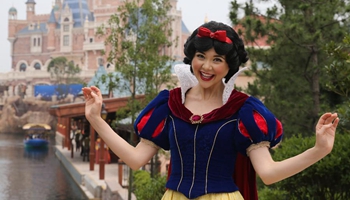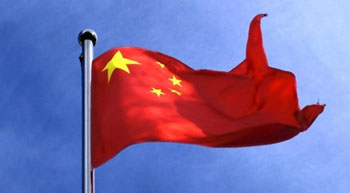by Liu Fang, Zindziwe Janse
AMSTERDAM, The Netherlands, June 15 (Xinhua) -- A lawsuit has been filed in the Netherlands for the repatriation of a 1000-year-old Buddhist mummy stolen from Yangchun village in China's southeast province of Fujian.
It is believed to be in possession of Dutch national Oscar van Overeem, Dutch lawyer Jan Holthuis who represents the Chinese villagers in Dutch court proceedings told Xinhua.
The villagers told an Amsterdam court on June 8 that the Dutch collector did not acquire the statue in good faith and has no right to own the human remains of an identifiable person under Dutch law.
The Dutch collector lent the Buddha statue with a mummified monk inside for an exhibition in Hungary at the end of 2014. Chinese villagers who saw the reports of the exhibition in March 2015 believed that the statue is "Zhanggong Patriarch" stolen from their temple and wanted it repatriated.
The villagers appointed a group of Chinese lawyers and a Dutch lawyer to start legal proceedings both in China and in the Netherlands. Holthuis International Lawyers is "dominus litis" or master in the Dutch court proceedings.
GOOD FAITH IN QUESTION
Jan Holthuis, managing partner of the Dutch law firm, said: "Van Overeem should have exercised a higher level of due diligence at the time of acquisition to check whether the object was illegally traded. Van Overeem also said the statue was traded through Hong Kong, known for illegal trade of this kind of Buddha statues at that time. We know that he bought the statue from another Dutch trader in Asian art, who was also an informed person."
In a statement sent to media after the statue was withdrawn from the exhibition in Hungary, a spokesperson of the Dutch collector said "the owner of the mummy has been collecting Chinese art for almost three decades" and "the owner bought the sculpture in the Netherlands from a fellow collector who, at that time, was sharing his professional time between Hong Kong and Amsterdam and who was well acquainted with the local Hong Kong art scene."
"In late 1995 in Amsterdam, the current owner noticed the statue first in the fellow collector's collection and by mid 1996 agreed to acquire it. The previous owner shipped the statue from his Hong Kong studio to his Amsterdam residence while he, in turn, in the winter of 1994-1995 acquired the statue from a Chinese art friend in Hong Kong," according to the statement.
Under the Dutch Civil Code, the possessor must observe the necessary diligence (prudence) at the acquisition of ancient cultural objects. Holthuis said "in professional art trading circles it is known that this kind of old statue could never have been exported out of China without a permit. A professional buyer should have asked for provenance documents and export permit. Apparently, Van Overeem did not."
HUMAN REMAINS INSIDE STATUE
Holthuis said the Buddhist statue carries the human remains of an identifiable person, who is 1,000 years old.
"The statue is a casket around the human remains of a person, and the Buddha statue is so much entangled with the corpse that one cannot be separated from the other. Eventually the leading part in this case is not the Buddhist art, but the human remains of the person that is in there," said Holthuis.
"According to the Dutch Burial and Cremation Act of 1991 and the interpretation of our Minister of Justice at that time, nobody can own a corpse. Nobody can therefore own this statue even if it is acquired in good faith. According to Dutch law, the family can claim the statue back. If the family cannot, then the caretaker can," he added.
The Chinese villagers have hundred years old genealogy records that refer to the origin of Zhanggong Patriarch by its full Chinese name, and the records show that it has been worshipped at Puzhao temple in Yangchun village from the Song dynasty (960-1279) to the Yuan dynasty (1279-1368). The Chinese characters on these documents are consistent with those on the praying mat stolen along with the statue.
"This genealogy is the interesting and unique thing in this case that proves Zhang Gong was related to the village temple and the villagers have been looking after their statue for a very long time. A link can be made between the village clan and this statue, and with the fact that the villagers have always worshiped this statue, they have the legal interest to claim back this statue," argued Holthuis.
WHAT NEXT?
"We sued three parties, Oscar van Overeem and his two companies registered at the same address, because we do not know whether he bought it through his company or privately," said Holthuis.
After the statement of claims is filed in court, the defendant normally has six weeks to prepare his statement of defense. He can ask an extension of another six weeks, and then again another extension with the approval of the other party.
The court might set a hearing and see whether they need additional information or whether they can already, after the hearing, take a decision. Another round of statements is still possible before the judge takes any decision and both parties can appeal.
"In Dutch legal proceedings, the judge lets the parties make arguments and eventually takes a decision on that basis although he can ask questions during the hearing and decide that one party shall give specific evidence," Holthuis said.
"The villagers deserve that we do our very best and we hope Master Zhang Gong can return to his usual resting place," he said.










